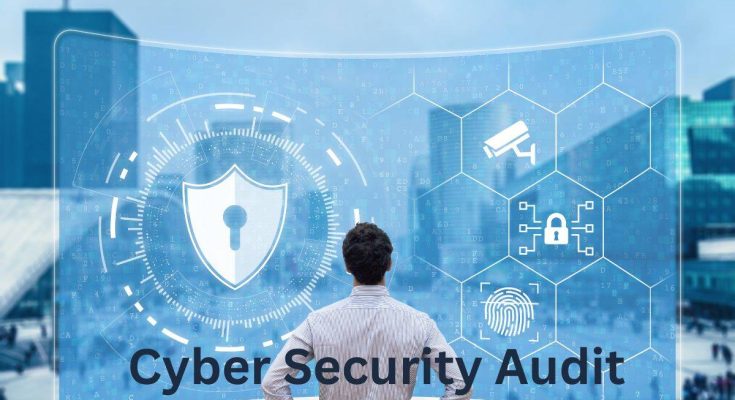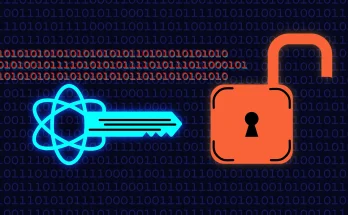JAKARTA, cssmayo.com – In today’s increasingly digital world, cybersecurity audits have become essential for organizations seeking to protect their sensitive data and maintain trust with clients and stakeholders. Conducting thorough audits helps identify vulnerabilities, assess risks, and ensure compliance with industry regulations. Drawing from real experience, this article discusses the significance of cybersecurity audits, the audit process, and best practices for conducting effective assessments.
Understanding Cybersecurity Audits
.webp)
What are Cybersecurity Audits?
Cybersecurity audits are systematic evaluations of an organization’s information systems, policies, and controls to assess their effectiveness in protecting against cyber threats. These audits aim to identify vulnerabilities, ensure compliance with regulatory requirements, and enhance the overall security posture of the organization.
The Importance of Cybersecurity Audits
- Vulnerability Identification: Regular audits help uncover weaknesses in systems, applications, and processes that could be exploited by cybercriminals.
- Risk Assessment: Cybersecurity audits provide a comprehensive view of potential risks, allowing organizations to prioritize their security efforts based on the severity of identified vulnerabilities.
- Regulatory Compliance: Many industries are subject to strict regulations regarding data protection. Audits help ensure compliance with these regulations, reducing the risk of penalties and legal issues.
- Improved Security Posture: By addressing identified vulnerabilities and implementing best practices, organizations can strengthen their defenses against cyber threats.
The Cybersecurity Audit Process
Conducting a cybersecurity audit involves several key steps:
1. Define the Scope and Objectives
Before initiating the audit, it’s crucial to define its scope and objectives. Consider the following:
- What systems and processes will be audited? Determine whether the audit will cover the entire organization or focus on specific areas, such as network security, application security, or data protection.
- What are the key objectives? Establish clear goals for the audit, such as identifying vulnerabilities, assessing compliance, or evaluating incident response capabilities.
2. Gather Information
Collect relevant information about the organization’s IT infrastructure, policies, and procedures. This may include:
- Network diagrams: Visual representations of the organization’s network architecture.
- Security policies: Documentation outlining the organization’s security protocols and procedures.
- Incident reports: Records of past security incidents and responses.
3. Conduct Risk Assessments
Perform risk assessments to evaluate the potential impact and likelihood of identified vulnerabilities. This involves:
- Identifying assets: Determine which assets (data, systems, applications) are critical to the organization.
- Evaluating threats: Assess potential threats to each asset, including internal and external risks.
- Assessing vulnerabilities: Identify weaknesses in security controls that could be exploited by threats.
4. Perform Technical Assessments
Conduct technical assessments to evaluate the effectiveness of security controls. This may include:
- Penetration testing: Simulating cyberattacks to identify vulnerabilities in systems and applications.
- Vulnerability scanning: Using automated tools to scan for known vulnerabilities in software and hardware.
- Configuration reviews: Assessing system configurations to ensure they align with security best practices.
5. Analyze Findings
After completing the assessments, analyze the findings to identify patterns and trends. Consider the following:
- Severity of vulnerabilities: Categorize vulnerabilities based on their potential impact and likelihood of exploitation.
- Root causes: Identify underlying issues contributing to vulnerabilities, such as inadequate training or outdated software.
6. Develop Recommendations
Based on the analysis, develop actionable recommendations to address identified vulnerabilities. Recommendations may include:
- Implementing new security controls: Adding firewalls, intrusion detection systems, or encryption to enhance security.
- Updating policies and procedures: Revising security policies to address gaps identified during the audit.
- Providing training: Offering training programs to educate employees on cybersecurity best practices.
7. Report Findings
Prepare a comprehensive audit report detailing the findings, analysis, and recommendations. The report should include:
- Executive summary: A high-level overview of the audit findings and recommendations.
- Detailed findings: In-depth analysis of identified vulnerabilities and risks.
- Action plan: A prioritized list of recommended actions to address vulnerabilities.
8. Monitor and Follow Up
After implementing recommendations, it’s essential to monitor progress and follow up on the effectiveness of the actions taken. This may involve:
- Regular reviews: Conducting periodic audits to assess ongoing compliance and security posture.
- Continuous monitoring: Implementing tools and processes to continuously monitor for new vulnerabilities and threats.
Best Practices for Effective Cybersecurity Audits
- Involve Key Stakeholders: Engage stakeholders from various departments, such as IT, compliance, and management, to ensure a comprehensive understanding of the organization’s security posture.
- Use a Risk-Based Approach: Focus on high-risk areas and prioritize vulnerabilities based on their potential impact on the organization.
- Stay Up-to-Date with Threats: Keep abreast of the latest cybersecurity threats and trends to ensure the audit process remains relevant and effective.
- Leverage Automation: Utilize automated tools for vulnerability scanning and reporting to streamline the audit process and improve efficiency.
- Document Everything: Maintain thorough documentation of the audit process, findings, and recommendations to facilitate future audits and compliance efforts.
Challenges in Cybersecurity Audits
While conducting cybersecurity audits is essential, organizations may face several challenges:
- Resource Constraints: Limited budgets and staff can hinder the ability to conduct comprehensive audits. Organizations should prioritize audits based on risk and resource availability.
- Evolving Threat Landscape: The rapidly changing nature of cyber threats can make it challenging to stay ahead of potential vulnerabilities. Continuous monitoring and adaptation are crucial.
- Cultural Resistance: Employees may resist changes to security practices. Promoting a culture of cybersecurity awareness can help mitigate this resistance.
Conclusion: Enhancing Security Through Cybersecurity Audits
Cybersecurity audits are a vital tool for organizations seeking to assess vulnerabilities and enhance their security posture. By following a structured audit process, engaging stakeholders, and implementing best practices, organizations can identify risks and take proactive measures to protect their sensitive data.
As cyber threats continue to evolve, regular cybersecurity audits will be essential for maintaining compliance, mitigating risks, and safeguarding the organization’s reputation. Embracing a culture of continuous improvement in cybersecurity practices will empower organizations to navigate the complexities of the digital landscape with confidence.
Elevate Your Competence: Uncover Our Insights on Techno
Read Our Most Recent Article About Wearable Fitness Technology!




